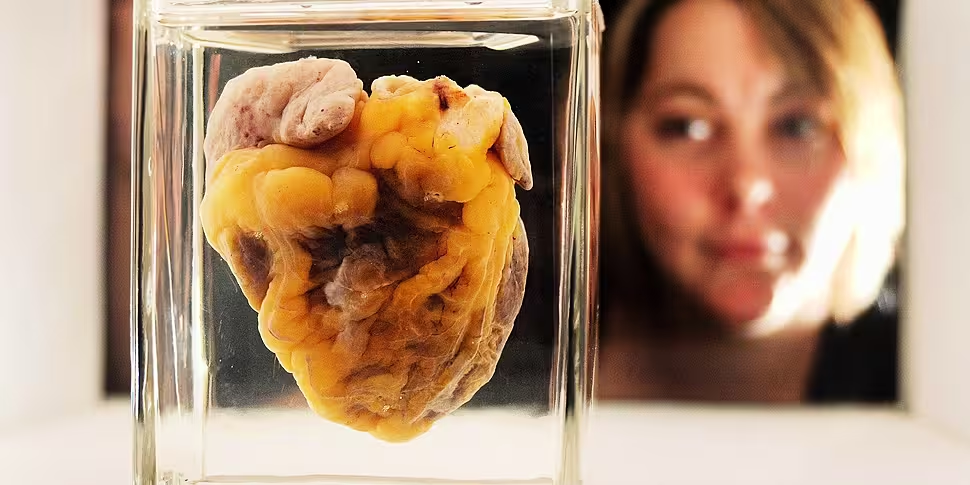One young woman got a second chance at life following a heart transplant – and then a chance to be immortalised when she gave her old heart to a museum.
In 2006, Jennifer Sutton was diagnosed with restrictive cardiomyopathy, a disease that stiffens some of the heart’s chambers, preventing blood from pumping around the body.
“It makes you incredibly breathless,” she told Moncrieff.
“You go blue quite often, you’re tired and very run down.”
Luckily, the then-22-year-old was able to receiven organ donation three months after her diagnosis.
“Some people wait years and years, so I ended up being incredibly to get a heart so quickly,” she said.
Operation
Having inherited the disease from her mother, who didn’t survive the transplant, Ms Sutton still feared the operation.
“I had been through this with someone who didn’t survive so it didn’t set me up very well, but you just have to have the faith,” she said.
Ms Sutton thankfully survived her transplant and felt like a “superhero” when she woke up with pink fingers, plump cheeks, and the ability to feel her toes.
“You're pretty much back to normal, which is crazy considering the operation you just went through,” she said.
Museum display
Following her transplant, Ms Sutton still made use of her heart – by offering it to the Royal College of Surgeons in London.
“They asked various people on the transplant waiting list whether they would be interested in a museum display,” she said.
“I said, ‘yes absolutely, I love that kind of thing’.
“It's an incredibly surreal experience but I think personally it’s very cool to be able to say that specimen is my heart and kept me alive for 20 years.”
Ms Sutton’s heart is currently on display at the Hunterian Museum in London, where attendants can watch a short documentary about Ms Sutton and the process of modern heart transplantation.
 GAAB01 The heart of Jennifer Sutton, aged 23, from Hampshire in a glass showcase at the Wellcome Trust office in Central London this morning.
GAAB01 The heart of Jennifer Sutton, aged 23, from Hampshire in a glass showcase at the Wellcome Trust office in Central London this morning.Ms Sutton warned that if anyone were to visit her heart, they should know that it’s not exactly an average-looking organ.
“The way that restrictive cardiomyopathy works is that the chambers of the heart get stiff overtime,” she said.
“The heart basically stretches and becomes much bigger but also thinner... it’s blown up like a balloon.”
Ms Sutton’s friends and family have all seen her heart at the museum, which is a strange experience for everyone involved.
"It must be odd for me, but also for people who know me to see something that was part of me just sat there on the side,” she said.
You can listen back here:









